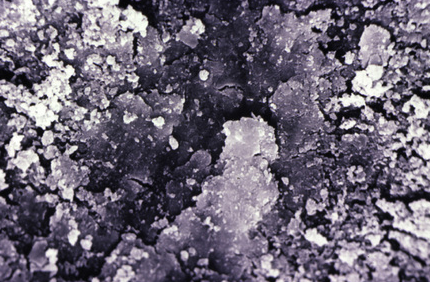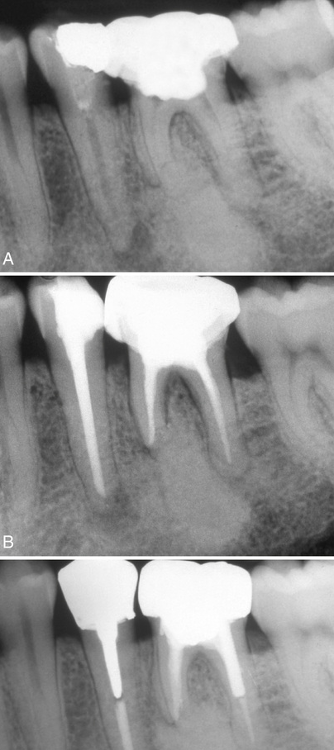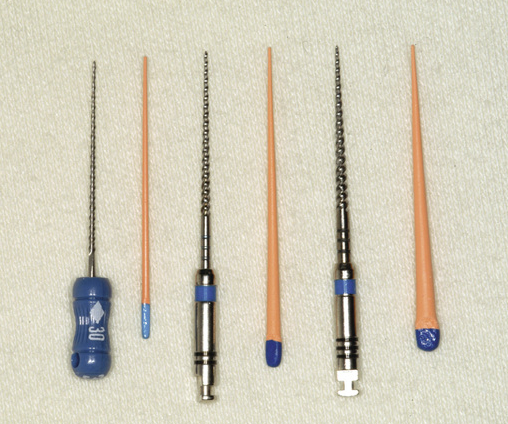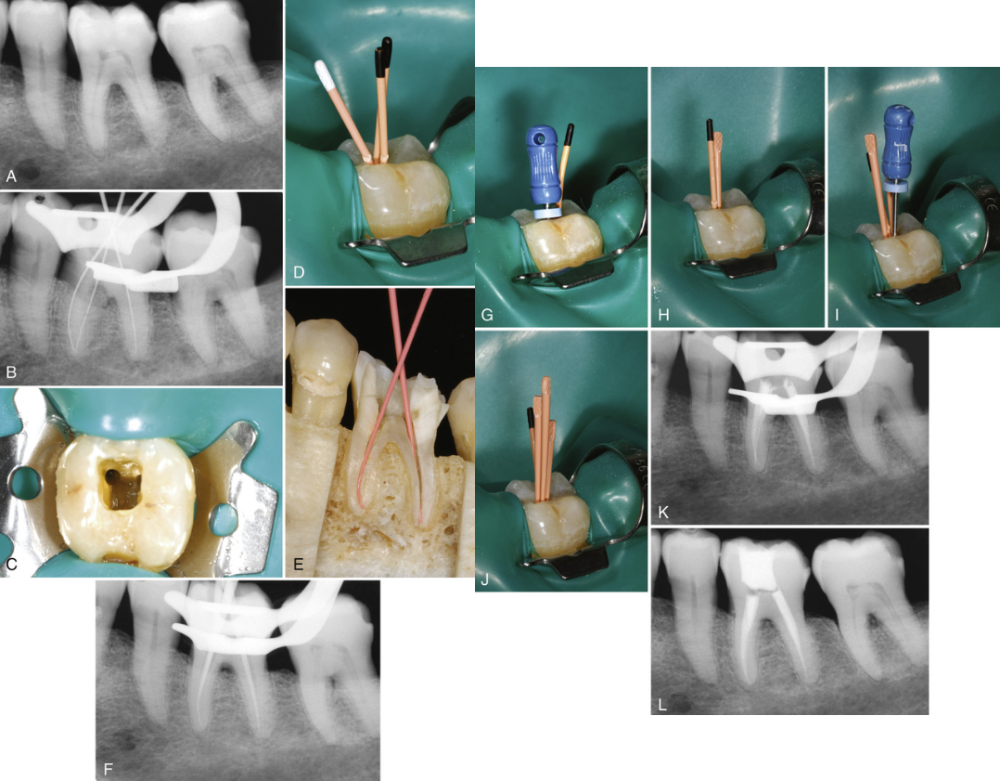What four factors influence success of primary root canal treatment?
- absence of a pretreatment periapical lesion
- root canal fillings with no voids
- obturation to within 2.0 mm of the apex
- adequate coronal restoration.
What four factors influencing the appropriate time to obturate a tooth?
- patient's signs and symptoms
- status of the pulp and periradicular tissue
- degree of difficulty
- patient management
___ has been advocated as an antimicrobial and temporary dressing in necrotic cases that cannot be treated in one visit.
Calcium hydroxide
What are two contraindications to obturation following cleaning and shaping?
- persistent exudate from the canal
- presence of swelling
The apical anatomy consists of the major diameter of the ___ and the minor diameter of the ___ . (Kuttler)

foramen; constriction
The average distance from the apical foramen to the apical constriction was found to be ___ mm. (Kuttler)
0.5 mm
Canals filled to the radiographic apex reflect an _____ of the obturating material.
overextension
During the cleaning and shaping process, organic pulpal materials and inorganic dentinal debris accumulate on the canal wall, producing a ___.

smear layer
The smear layer is superficial with a thickness of ___ µm. This superficial debris can be packed into the dentinal tubules to various distances.
1 to 5 µm
What are four possible disadvantages of the smear layer during obturation?
- it may be contaminated with bacteria and their by-products
- it may interfere with penetration of sealers into dentinal tubules
- it may interfere with the action of irrigants used as disinfectants
- it may prevent gutta-percha penetration during thermoplastic techniques
After the completion of cleaning and shaping procedures, removal of the smear layer is generally accomplished by irrigating the canal with ___ and ___.

17% disodium ethylenediaminetetraacetic acid (EDTA); 5.25% sodium hypochlorite (NaOCl)
The recommended time for removal of the smear layer with 17% EDTA is ___ minutes.
1 to 5 minutes
What five categories should be considered in radiographic criteria for evaluating obturation?
- length
- taper
- density
- gutta-percha and sealer removal
- adequate provisional or definitive restoration
___ are necessary to seal the space between the dentinal wall and the obturating core interface.
Root canal sealers
What are the properties of an ideal sealer?
- tackiness when mixed
- establishes hermetic seal
- radiopaque
- easily mixed
- does not shrink on setting
- does not stain tooth structure
- bacteriostatic
- slow setting
- insoluble in tissue fluids
- tissue tolerant
- soluble in a common solvent
Regardless of the sealer selected, all exhibit ___ until they have set. For this reason, extrusion of sealers into the periradicular tissues should be avoided.

toxicity
___ sealers exhibit a slow setting time, shrinkage on setting, solubility, and they can stain tooth structure. An advantage to this sealer group is antimicrobial activity.
Zinc oxide–eugenol
___ sealers were developed for therapeutic activity. It was thought that these sealers would exhibit antimicrobial activity and have osteogenic–cementogenic potential.
Calcium hydroxide
Developed from a periodontal dressing, ___ is a root canal sealer without the irritating effects of eugenol.
Nogenol (non-eugenol sealer)
___ sealers have been advocated for use in obturation because of their dentin-bonding properties. A disadvantage is that they must be removed if retreatment is required and have minimal antimicrobial activity.
Glass ionomer
___ sealers have a long history of use, provide adhesion, and do not contain eugenol. There are two major categories: epoxy–based and methacrylate–based sealers.
Resin
___ sealers fills canal irregularities with consistency and are biocompatible, but the setting time is inconsistent and may be delayed by final irrigation with sodium hypochlorite.
Silicone
___ sealers are a new category of based on mineral trioxide aggregate (MTA).
Calcium silicate sealers
Sealers containing___, which were advocated for use by Sargenti, are strongly contraindicated in endodontic treatment.

Paraformaldehyde
What are the properties of an obturation material?
- easily manipulated
- dimensionally stable
- seals canal laterally and apically
- nonirritating to tissues
- impervious to moisture
- unaffected by tissue fluid
- inhibits bacterial growth
- radiopaque
- does not discolor tooth
- sterile
- easily removed if necessary
Jasper introduced cones made of___. Although their rigidity made them easier to place and permitted more predictable length control; their inability to fill the irregularly shaped root canal system permitted leakage and they were susceptible to corrosion.

silver
___ is the most popular core material used for obturation. Major advantages are its plasticity, ease of manipulation, minimal toxicity, radiopacity, and ease of removal with heat or solvents. Disadvantages include its lack of adhesion to dentin and, when heated, shrinkage upon cooling.
Gutta-percha
In the unheated ___ phase, gutta-percha is a solid mass that is compactable.
β
When heated, gutta-percha changes to the ___ phase and becomes pliable and tacky and can be made to flow when pressure is applied.
α
Gutta-percha cones consist of approximately 20% ___, 65% ___, 10% ___, and 5%.
gutta-percha; zinc oxide; radiopacifiers; plasticizers
The α form of gutta-percha melts when heated above ___°C.
65 °C
Nonstandard nomenclature for gutta-percha cones refers to the dimensions of the tip and body. A fine-medium cone has a ___ tip with a ___ body.

fine; medium
Standardized gutta-percha are designed to match the taper of stainless steel and nickel-titanium instruments. A size 40, 0.04 taper cone has a tip of ___ mm and a taper of ___ mm per millimeter.

0.4 mm, 0.04 mm
Activ GP (Brasseler USA) consists of gutta-percha cones impregnated on the external surface with ___.
glass ionomer
Resilon is a high-performance industrial ___ that has been adapted as an alternative to gutta-percha.
polyester
When the apical foramen is excessively large or the prepared root canal system is large, a ___ cone may need to be fabricated.

custom
Briefly describe the lateral compaction method of obturation.

- A, Pretreatment radiograph.
- B, Working length radiograph.
- C, Coronal access opening.
- D, Standardized master cones selected.
- E, Standard master cones fit to length.
- F, Master cone radiograph.
- G, Finger spreader in place.
- H, Fine-medium accessory cone placed.
- I, Finger spreader placed in preparation.
- J, Additional cones are placed.
- K, Interim radiograph.
- L, Posttreatment radiograph.
When the master cone is placed in the canal, if an appropriate size is selected, there will be ___.
resistance to displacement ("tug back")
If the master cone is loose at the working length, then it can be adapted by ___.
removing small increments from the tip
If the master cone fails to go to the prepared length, than a ___ should be selected.
smaller cone
After the spreader has been placed to its maximum depth, it is removed by ___ as it is withdrawn.
rotating
Only light pressure is required during lateral compaction because the gutta-percha is not condensed, and because as little as ___ kg of pressure is capable of fracturing a root.

1.5 kg
Briefly describe the warm vertical compaction method of obturation.

- A, Nonstandard cones are selected and fit short of the prepared length.
- B, Heated pluggers or spreaders are used to apply heat to the master cone and remove the excess coronal material.
- C, A room temperature plugger is used to compact the heated gutta-percha.
- D, Apical compaction is complete.
- E, A gutta-percha segment is placed in the canal, and heat is applied.
- F, The heated segment is compacted.
- G, The process is repeated for the coronal portion of the canal by placing and heating a segment of gutta-percha.
- H, A plugger is again used to compact the heated material.
- I, Completed obturation.
Because the critical level of root surface heat required to produce irreversible bone damage is believed to be greater than ___°C, caution should be exercised with the Touch 'n Heat and flame-heated carriers.
10 °C
Warm thermoplastic techniques have the advantage of producing movement of the ___ gutta-percha within the obturated root canal system, resulting in a more ___ mass of gutta-percha, and filling irregularities and accessory canals better than lateral compaction.
plasticized; homogeneous
Heating of gutta-percha outside the tooth and injecting the material into the canal is an additional variation of the ___ technique. The Obtura III, Calamus, Elements, HotShot, and Ultrafil 3D are available devices.
thermoplastic
Thermoplastic techniques are often used in cases with significant ___.

canal irregularities
___ was introduced as a gutta-percha obturation material with a solid core. Advantages included ease of placement and the pliable properties of the gutta-percha. Disadvantages were that the metallic core made placement of a post challenging and retreatment procedures were difficult.

Thermafil
___ is a carrier-based system associated with Ultrafil 3D; however, the gutta-percha used in this technique comes in a syringe.

SuccessFil
___ is gutta-percha or Resilon manufactured for use after canal preparation with LightSpeed instruments.

SimpliFill
Gutta-percha can be plasticized with solvents, such as ___, ___, or ___.
chloroform, eucalyptol, or xylol
Apical barriers such as ___, ___, or ___ may be necessary in cases with immature apical development, cases with external apical root resorption, and cases where instrumentation extends beyond the confines of the root.

dentin chips, calcium hydroxide, or mineral trioxide aggregate (MTA)
Leakage studies indicate that the coronal seal can be enhanced by the application of supplemental restorative materials over the canal orifice and by placing a definitive coronal restoration as soon as is feasible. ___ has traditionally been advocated as an acceptable material.
Cavit